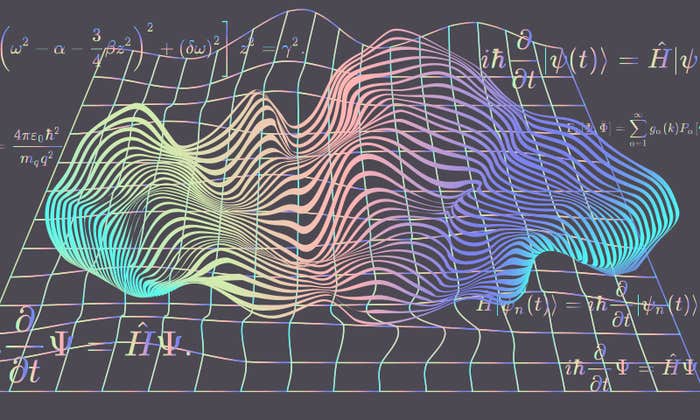The history of astronomy has hinged on radical ideas that transformed our understanding of the cosmos and our place in it. The most obvious of these may be the discovery in the 16th century that the Earth and other planets orbit the sun. An unpopular idea when it was first proposed, today it is so fundamental to basic astronomy it is practically taken for granted. But our most brilliant scientists have also floated some wild ideas that were not only unpopular at the time—they also turned out to be incredibly wrong. Some of these wrong ideas led to other important discoveries, however, that were very right. Here are a few of astronomy’s fallen angels for your enjoyment.
1. Kepler’s planets
The pioneering 16th-century German astronomer Johannes Kepler proposed in his book Mysterium Cosmographicum, published in 1596, that the gaps between the planets could be explained in terms of the five “Platonic” solids: These were “regular” polyhedrons with four, six, eight, 12, and 20 faces that Plato hypothesized could describe the shapes of all of the elements on Earth. According to Kepler’s theory, the planets’ orbits were dictated by these five different shapes: The orbit of Venus, for example, fit within a 20-sided icosahedron, the orbit of the Earth fit within a 12-faced dodecahedron, the orbit of Mars within a 4-faced tetrahedron, and so on. This scheme produced six layers, each nested inside the other, which Kepler claimed corresponded to the orbits of the six known planets at the time.
Later observations showed his proposal was entirely wrong, but the idea brought Kepler to the attention of the Danish astronomer Tycho Brahe. Tycho was then working in Prague for the Holy Roman Emperor and invited Kepler to become his assistant. When Tycho died about 18 months later, Kepler became his successor as Imperial Mathematician. The appointment gave Kepler access to Tycho’s observations, which he eventually used to formulate his laws of planetary motion.
2. The luminiferous aether
Many physicists in the 19th century thought the universe was filled with an unseen medium called the “luminiferous aether” (or ether) that allowed light to propagate as waves. The famous Michelson-Morley experiment in 1887 finally proved this wrong, by determining the aether didn’t make any difference to the speed of light when the Earth was at different points in its orbit. As a result, physicists sought new explanations for the behavior of light, which led to Albert Einstein’s special theory of relativity in 1905.
3. A triple Saturn
The Italian astronomer Galileo Galilei didn’t know what he was seeing when he first observed Saturn through a telescope: “The star of Saturn is not a single star,” he wrote in 1610 “but is a composite of three, which almost touch each other.” What he was seeing was Saturn’s rings, but nobody expected planets to have rings back then. Galileo’s idea that Saturn consisted of a single planet with two large moons that almost touched it on either side—something never before imagined—lasted until 1659, when the Dutch astronomer Christiaan Huygens proposed that the observed changes in Saturn’s shape were caused by Earth’s view of its rings as the planet slowly changed its tilt.
4. Binary stars
Early sky-watchers like the German-British astronomer William Herschel explained their many observations of “double” or “binary” stars as tricks of alignment, supposing that one of the stars was much farther behind the other. But in 1767, the English scientist John Mitchell—a friend of Herschel—showed mathematically that there were far too many observations of double stars for such alignments to occur at random; instead, he reasoned, the stars must be relatively close and bound together by their gravitational pull. Mitchell asserted that stellar clusters, too, couldn’t be the result of random alignments, and calculated that there was only about one in half-a-million chance that the Pleiades cluster, made of more than 1,000 stars and sometimes known as the Seven Sisters, could have formed randomly. Mitchell’s work was the first application of statistics to astronomy.
“The star of Saturn is not a single star,” Galileo wrote in 1610 “but is a composite of three.”
5. The planet Ceres
After Ceres was discovered in 1801 by the Italian priest Giuseppe Piazzi, astronomers around the world hailed it as a new planet—the first detected inside the orbit of Jupiter since antiquity. Ceres occupied a gap in the solar system where the 18th-century Titus-Bode law suggested a planet should reside. Piazzi initially declared that Ceres was only a comet, but admitted in a letter to a friend that he thought it might be a planet instead; later observation suggested his suspicions were correct. But the discovery of Pallas—the third-largest asteroid in the solar system—and other objects in roughly the same orbit soon established that Ceres was one of many “asteroids”—a term coined by Herschel. It is now classified as the only “dwarf planet” in the inner solar system.
6. The canals of Mars
One of the first to see lines on the surface of Mars was the Italian astronomer Giovanni Schiaparelli, who in 1877 said he’d observed seas and continents connected by linear structures, which he called canali. Schiaparelli seems to have thought the lines were natural—the word canali means “channels” in Italian. But the idea that they were artificial canals became widespread and culminated in three books written by the pioneering American astronomer Percival Lowell. Lowell proposed there was a vast network of irrigation canals on Mars that could only have been built by intelligent Martians. But observations by NASA’s Mariner space probes in the 1960s showed no such features, and it now seems the Martian canals were an optical illusion.
7. The steady-state theory
Almost all cosmologists now subscribe to the Big Bang theory, which proposes the universe began with the sudden expansion of a “cosmic egg” about 13.8 billion years ago. But many 20th-century theorists—including the eminent English astronomer Fred Hoyle, who developed the theory of stellar nucleosynthesis—preferred the steady-state theory, which proposed that the universe had no beginning and no end. Under the steady-state theory, new matter was continually being created in voids between stars and galaxies, thereby maintaining the density of matter in the expanding universe. But it was at odds with observation that found only newer galaxies at the edges of the universe; and it fell from favor after the 1964 discovery of the cosmic microwave background, which had been predicted by the Big Bang theory.
8. Alien radio
The discovery of the first pulsar—a “pulsating radio source”—by the Northern Irish astrophysicist Jocelyn Bell in 1967 was a perplexing development: No one could imagine how such a powerful radio source could repeat every one-and-a-third seconds. Bell’s discovery of a second pulsar a few weeks later quashed the notion that this was a radio signal from an alien intelligence; but the idea seems to have been taken seriously, at least for a day or two, and the first pulsar was given the name “LGM-1,” for “little green men.” Astronomers soon identified pulsars as rapidly rotating neutron stars.
9. A planet for Barnard’s Star
In the 1960s, the Dutch astronomer Piet van de Kamp announced he’d detected the first planet beyond our solar system around Barnard’s Star—a red dwarf relatively close to Earth and the fastest-moving star in our sky. Van de Kamp based his idea on wobbles in the star’s path, which he proposed showed the tug of an orbiting planet at least three times larger than Earth. Van de Kamp’s method had some similarities to the radial velocity method now often used to detect exoplanets. Radial velocity is measured by observing the gravitational wobbles on a star caused by their orbits. But astronomers determined that van de Kamp’s claims were in error; and while later observations have suggested there might indeed be an exoplanet around Barnard’s Star, it would have been too small for van de Kamp to have detected it. ![]()
Lead image: Sergey Nivens / Shutterstock




























